Prominent New Castle Man Reveals Childhood Near-Death Experience
Opinion Advocates for ideas and draws conclusions based on the author/producer’s interpretation of facts and data.
Finance Wiz Publicly Shares Story for First Time
Examiner Column Sparks Family Conversation 57 Years in the Making
‘I was left on Earth to do something important’
This column marks the sixth installment in a series exploring topics and research that provide new insights into the boundaries of established science, and part three of a package focused on the spiritual realm and near-death experiences.
By Adam Stone
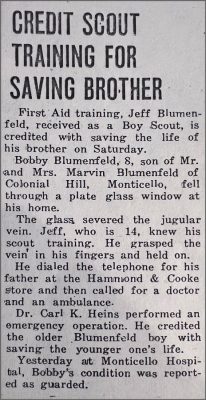
It was July 1966, many years before New Castle’s Bobby Blumenfeld became a leader in business, a philanthropist and the married father of two successful Horace Greeley High School graduates.
He was just an eight-year-old boy that summer, playing a game and about to undergo a transformative experience.
Mom and dad weren’t home. Big brother, Jeff, was babysitting in their Monticello home, playing Keep Away with Chips Ahoy.
Bobby would try to grab the cookies, and then 14-year-old Jeff would jump up and chase his kid brother out an aluminum-framed door leading to the garage.
After a few rounds, Bobby went to run outside one more time but missed the handle, crashing through a plate glass screen.
He tumbled onto the cement floor, and collapsed on his back, his jugular vein severed by shards of glass.
The boy stumbled back into the kitchen, his neck gushing with blood and fell to the floor again.
‘Minute and a Half Left’
Jeff, a capable Boy Scout trained in first aid, called for an ambulance on the family’s rotary phone, and applied direct pressure to his dying brother’s neck.
Their little sister, Jane, just six at the time, watched in horror, blood splattered throughout the garage and kitchen, the gore even painting the ceiling.
As luck would have it, a nearby cousin and family physician, cardiac expert Dr. Seymour Cohen, was down the block at a local swim club and saw the ambulance rushing over and joined the medical team.
It’s around this time when Bobby Blumenfeld reports leaving his body.
“And then it’s just sort of the weird sensation of looking down at everybody as they were working on me,” Blumenfeld, now 65, told me in an interview last week, publicly sharing details of his experience for the first time. “So I was probably, at that point, sort of out of it, but still my brain was looking down from the ceiling of the ambulance.”
He stayed in the hospital for eight days, and even after returning home, it took a while to fully recover from emergency surgery, dealing with lingering leg and neck issues, having lost a massive amount of blood.
“I mean, I cut my jugular,” Blumenfeld said. “I was told that I had a minute and a half left.”
‘Floating Experience’
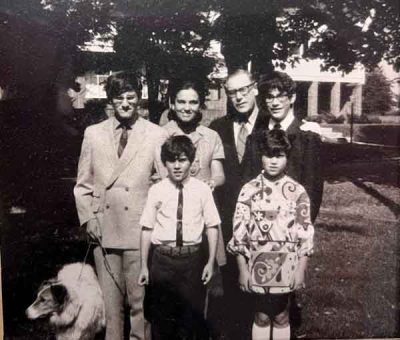
All these years later, the images of leaving his body in the ambulance remain seared in Blumenfeld’s memory.
“I remember vividly floating upwards and hovering over the ambulance interior looking down at those that were providing medical assistance,” Blumenfeld explained. “Just floating there for the three-minute ride to the hospital.”
I asked how it felt.
“It was calmness,” he replied. “It wasn’t like being scared or anything. It was just being calm. It was just sort of a floating experience. Were there lights above? I think so.”
Blumenfeld, who lives in the Mount Kisco section of New Castle, is still unsure what precisely to deduce about the true nature of near-death experiences, a phenomenon described by millions across the globe and across history, cultures and religions.
“I came back down and there must be a reason for that,” said Blumenfeld, whose neck remains severely scarred. “We don’t even understand how the mind works. Whether it was some other force, I’ll leave that up to others.”
Many who have near-death experiences believe they survived because they had more to do in this life.
Blumenfeld is no exception.
Man on a Mission
Married in 1982, Blumenfeld and his wife raised two children; their son has worked in politics and currently runs a nonprofit while their daughter is engaged in the environmental field.
An accomplished leader in mergers and acquisitions, the Fordham MBA started Blumenfeld Financial Group in 1995, and eventually became director of the American Industrial Acquisition Corporation.
He provides advisory services, mostly to mid-market business owners, as well as nonprofits.
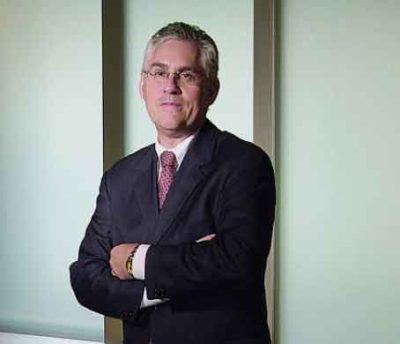
Blumenfeld’s career had begun in a family retail business, which started in Queens. They operated 250 stores across the United States. Later, he worked at an ad agency, where he managed the famous “Nobody Beats the Wiz” campaign.
But helping others has always been central to Blumenfeld’s value system.
“I still think I was left on Earth,” he reflected, “to do something important to help others.”
‘Magnification Would be Immense’
Blumenfeld’s philanthropic journey started in high school, orchestrating food and clothing drives and volunteering with the local ambulance corps.
In his college years at Babson in Wellesley, Mass., he co-founded the largest charity on campus, Circle K, a branch of Kiwanis (an international service club) while also chairing various committees to benefit student welfare.
Later on, as president and executive director of the Association for Corporate Growth New York, he championed diversity and inclusion.
He also established the D’Oyly Carte Foundation, a charity to benefit organizations that support the staging of Gilbert & Sullivan operas in the United States, Europe, Canada and Australia.
“It may be all a precursor to future opportunities in developing and growing solutions,” he said. “If everyone just donated a little of their time, the magnification would be immense.”
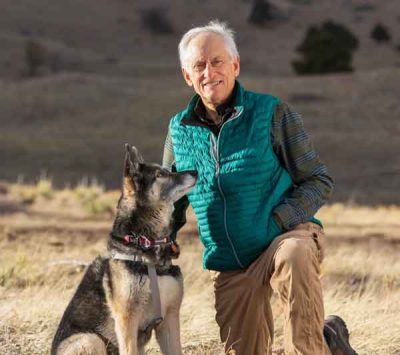
(Research overwhelmingly illustrates how nearly all those who had near-death experiences place immense value in the betterment of the world. People who were once driven by material success, or filled with hate, almost always report being guided by love after their experience.)
As regular readers of this column know, I’ve written two recent dispatches about near-death experiences, also known as NDEs. I reported on incredible new scientific findings from NYU Langone Medical Center confirming how the incidents are not hallucinations.
In short, a study by NYU’s Dr. Sam Parnia and his team of researchers found that many patients who suffer cardiac arrest show signs of heightened consciousness in their brain activity even when their heart stops beating.
“Consciousness, awareness and cognitive processes may occur during” cardiac arrest, the team concludes in a medical journal, Resuscitation.
The emergence of normal brain activity, the researchers believe, likely reflects a “resumption of a network-level of cognitive activity, and a biomarker of consciousness, lucidity.”
Weird Science
What they’re really suggesting, in plain English, is that consciousness endures after the heart stops, post clinical death. The findings captured headlines across the globe last month.
But in today’s world, marked by information overload, even the most sensational, potentially earth-shaking news can seem to just come and go like a crashing wave.
The Parnia team’s study, conducted in more than 25 hospitals in the U.S. and the U.K. involving 567 patients, was the most comprehensive examination ever of the human brain and consciousness during the transition from life to death through cardiac arrest resuscitation.
“The brain was flatlined, but eventually, at some point in 40 percent of them, we actually saw signs of lucid brain activity, which actually validates what people have said for years, that they’re having a real lucid experience as they’re going through life and death,” Parnia, director of critical care and resuscitation research at NYU Langone, told me in a phone interview for one of my columns last month. “That’s the first thing that was important. We found basically a brain marker that validated millions of people’s testimonies.”
Say What?!
When I interviewed Jeff Blumenfeld last week, I was astonished to hear how he’d only just learned about Bobby’s more than half-century-old experience of leaving his body in the ambulance.
“I learned about it when he sent that letter to you,” Jeff Blumenfeld, now 71, said when referring to an e-mail Bobby sent me about his NDE a couple weeks ago, after reading my earlier columns. “I never really knew that he had that experience. We never talked about it. Never knew he had that.”
(Bobby said he’d mentioned the experience to his wife before, and also told Jeff, seemingly in passing, but acknowledges how it was just “nothing that I really talked about.”)
An adventure travel enthusiast, book author and the publisher of Expedition News, Jeff Blumenfeld correctly noted how his brother’s experience comports with commonly reported details of NDEs, adding how it’s “gratifying because it sounds similar to other stories.”
It makes sense to me that Bobby never seriously broached the subject with his big brother before in any depth.
Jeff was hailed as a young Monticello hero in the local Republican Watchman newspaper in 1966 with an item headlined “Credit Scout Training for Saving Brother.”
He was even contacted by the national Boys’ Life scouting magazine for an interview, although his father had him decline.
But Blumenfeld remained wracked with guilt over his role in his younger brother’s accident.
“I get to the hospital thinking that I was going to be blamed but when I got to the hospital, they all thanked me for saving his life,” Blumenfeld recalled, although the hero’s welcome couldn’t vanquish the complicated emotions.
I asked Blumenfeld, a Boulder, Colo. resident, what impact the new information might have on his view of a potential afterlife. He’s always hoped without faithful belief that consciousness persists after earthly death.
Did learning about his brother’s experience inch him closer to belief?
“Oh, it’s much more,” he replied in an interview last week. “It’s much more. But again, what he’s talking about is consistent with other things I’ve read.”
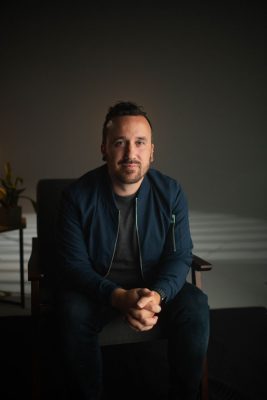
Lights On
In fact, the details are emerging at an impactful time in the elder Blumenfeld’s life. He’s on dialysis, dealing with kidney failure, seeking a donated organ, even launching a website, JeffsKidneySearch.com
I wondered how his brother’s stunning revelation, all these years later, has impacted his approach to mortality, especially as he’s enduring his own health scare.
“It makes me pleased to know that something like that exists,” said Blumenfeld, founder of Blumenfeld and Associates public relations. “It’s not just total lights out.”
But now he needs to get that organ; he’s among about 90,000 Americans on the hunt.
“I’m planning to write a book called How to Find a Kidney,” said Blumenfeld, who is on the waiting list at Weill Cornell Medicine, among other places. “But the book needs a happy ending.”
Sister Jane
By the time I interviewed Bobby and Jeff’s little sister, Jane Silverman, now 63, I thought she’d already heard about Bobby’s experience leaving his body.
But when I phoned the successful Miami public relations practitioner and Florida Keys community newspaper columnist this past Saturday morning, I was delivering news she had never heard before.
“I actually didn’t know he had one,” said Silverman, who is married with a pair of sons, ages 20 and 23, and has coordinated events at prominent places such as the United Nations, Lincoln Center and 10 Downing Street.
I then discovered that supernatural descriptions aren’t new to Silverman.
As it turns out, about three decades ago, Silverman’s friend almost died in an accident at her Rhode Island farm, run over by her own car, her rib cage crushed. The friend later told Silverman how she experienced several classic NDE elements.
“And when she was in the ambulance, they had to jab one of these adrenaline needles, a super big needle, into her heart to bring her back to life,” Silverman recalled. “She said that she felt like she was going through a long, dark tunnel with a light at the end and that her children were angels next to her saying, ‘Don’t go, Mommy.’”
‘Cosmic Energy’
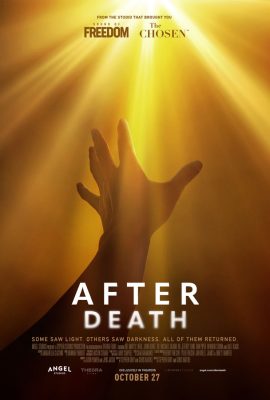
In my conversation with Silverman, she also shared for the first time how she had her own experience of leaving her body when she was about 10 years old, while battling a fever.
“I remember looking down at myself and I remember distinctly lying in my bed in Monticello, looking down at my body,” she revealed.
In thinking back to her brother’s terrifying 1966 injury, watching blood spray throughout the garage and kitchen, Silverman recalled her inability to respond in that emergency situation. Jeff had asked her to dial the operator. However, she remembers “feeling just frozen.”
He had his six-year-old sister hand him the phone, extended on a long cord, and held Bobby’s neck together with one hand while phoning in the emergency on the other.
“And from that moment on,” she explained, “I am the first person in an emergency to react.”
But I also wondered what larger lessons Silverman might now absorb, reflecting on her friend’s NDE, her own mysterious bodily departure, and the newly-revealed experience of her brother.
My question led her to talk about the notion of auras, the idea that people are surrounded by energy fields, reflecting their emotional and spiritual states.
“I’ve never really felt that there was a heaven or hell, but I do feel that there is sort of a karmic energy in the world,” she said. “And I’m not somebody who’s well-spoken about this subject, but I do feel like there is a cosmic energy in that what you give to the world, you get back.”
Tradition
Actually, Bobby Blumenfeld was just one of several area residents who reached out to me in recent weeks to recount their NDEs. Some didn’t want to share the details publicly, but some did. (I’ll get to one who did in a moment.)
The fact that many people in our coverage area have had NDEs is not at all surprising. Near-death experiences are reported by about 17 percent of people who almost die, according to clinical research published by Dr. Jeffrey Long, a prominent figure in the field.
Many people, myself included, believe NDEs offer a glimpse into a profound and real dimension of spiritual existence and at the same time recognize the deeply personal and diverse interpretations of the experiences, sometimes rooted in personal religious faith.
As for Blumenfeld, who was raised Jewish, he said the mystifying experience hasn’t necessarily influenced his feelings toward faith one way or the other.
A member of a shul as a child, joining synagogues as an adult in New York City and later in Westchester, he said, “I’m more of a traditionalist than I am religious.”
Twin Miracles
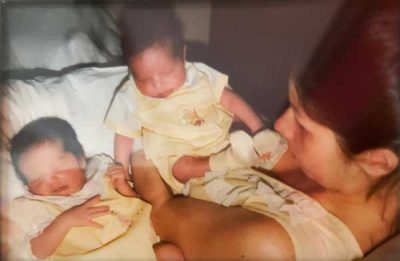
In terms of the sources I’ve heard from in recent weeks, one especially compelling account came from a New Jersey woman whose 90-year-old aunt, Mary Ann Paccioreti, lives in Yorktown Heights and had read my earlier NDE columns and encouraged her niece to contact me.
Donna Matthews, a 73-year-old Lake Hopatcong resident, shared a story of returning to life after clinical death following childbirth on June 29, 1974, when she had twins, Jennifer and Joseph Jr., via a C-section at Albert Einstein Hospital in the Bronx.
She’d been about eight months into her pregnancy.
At that time, ultrasounds weren’t available, and doctors believed she might be carrying four babies due to an X-ray.
After a relatively normal hospital stay of two days, on the third day Matthews began bleeding profusely while a nurse was removing her IV. Medical staff did everything they could but were unable to stop the bleeding.
“When they took out my intravenous, and I was bleeding internally, and that’s when I went out,” she said. “They brought my parents in. They called my husband. He came, and the doctor said, ‘There’s nothing we can do.’ And at that point is when I passed.”
But the new mother then found herself in heightened consciousness, enjoying a “very calm” energy. She felt her soul leave her body and saw her human shell lying in bed, being provided oxygen as her family grieved.
“I couldn’t figure out why they were so upset,” she said. “I was looking down on them, and I saw my parents hysterical, and I couldn’t figure out why they were so upset. I said, ‘I’m here. Why can’t anybody see me?’”
But then she began to realize she’d died.
“And I knew also what was going on below me, which was the crazy thing, because I knew everyone thought I was [gone],” she told me in an interview last week. “They had given me last rites. And when I came out, I was telling everybody, and they said, ‘No, you probably had a dream.’ But I know it was real. I just felt it. Felt it in my heart, in my soul.”
She encountered a bright light and was greeted by her beloved late grandmother, who passed about two years earlier, as well as her maternal Aunt Lucy, who’d died of cancer at a young age.
Matthews, a Catholic, recalls her late Italian grandmother speaking to her, saying: “See everything is great here. No more pain. It’s beautiful. Come with me. You’ll be ok. I’ve been waiting for you. And extended her hand to me.”
Executive Decision
But the 24-year-old had a choice.
“My grandmother said, ‘You have to decide. You have to make a decision. You can either stay or you got to go back.’ And I said, ‘I waited so long to have my babies. I can’t leave them now.’ And she said, ‘Well, then, you have to go.’ And behind her in the background, I know it was Jesus standing there, but he had his back to me.”
She told her grandmother she loved her, yet she needed to leave. It had been a nightmarish time getting pregnant, losing one of her ovaries.
“I finally had my babies,” Matthews said. “Twins. I couldn’t leave them without a mom. That’s all I ever wanted was to be a mother, as much I loved her.”
Matthews’ spirit then returned to her physical body.
“Stopped bleeding with no one knowing how it happened,” she explained.
Unfortunately for Matthews at the time, it was about a year before high-profile NDE research was first widely published in a classic book by esteemed psychologist Dr. Raymond Moody.
“They didn’t believe me at all back then,” she remembers. “They just thought I was making the whole thing up. I think the only thing that verified what happened was the head of the hospital had come in and he said, ‘There is no rhyme or reason why this girl is alive.’”
By 1980, Matthews divorced her first husband and started a new chapter.
“So it was almost like I had a new lease on life,” she said of her mindset following the NDE.
Living with Purpose
The twins, meanwhile, have gone on to live full lives; Matthews’ daughter eventually became a teacher for the deaf while her son has a family, too, navigating challenges of a recent divorce.
“My twins are well with families of their own,” said Matthews, a retired high school special education aide, assisting students on the autism spectrum.
She’s built a large and loving tribe, including five stepchildren, 17 grandchildren, and seven great-grandchildren. Following a second divorce, she married her third husband, Bob, a welder, and they’ve been together for almost four decades.
I asked Matthews for her grand takeaway from experiencing this otherworldly realm.
“To be good to people, to help as much as you can,” she replied. “Life is so short, you never know.”
If anybody needs help, Matthews is the person friends and family summon.
“My sister always says, ‘If you need something, that’s my sister, not me.’ So I think [the NDE] has a lot to do with it.”
There was another question on my mind for the devout Catholic. I wondered if her experience of seeing Jesus could be authentic without negating the experiences of people of other religious faiths observing different celestial figures in their post-death consciousness.
“Sure,” she replied, “I think so, definitely.”
‘After Death’
Subsequent to publishing the first two parts of this NDE/spiritual series, I also heard from a PR representative for “After Death,” a feature-length documentary film slated for national release in about 2,000 theaters in the United States and Canada on Oct. 27.
The PR person saw my work when researching Dr. Moody, the psychologist who coined the catchy term “Near-Death Experience” in his pioneering, best-selling 1975 book, “Life After Life.” (The doctor’s latest book, “Proof of Life After Life,” was released last month.)
“After Death” explores the world’s most compelling mystery – what precisely happens after we die.
It features five New York Times best-selling authors, telling the story through interviews with survivors and doctors and an exploration of medical research.
Angel Studios provided me with a preview of the film, which opens with the dramatic story of Capt. Dale Black, who described a divine sense of peace amid a bright light while clinically dead after a 1969 plane crash in Burbank, Calif. that was covered by the Los Angeles Times.
Last Thursday I interviewed the film’s 38-year-old director, Stephen Gray, about his first feature film.
‘Quite a Bit of Evidence’
With so many people hurting in the world and searching for answers, Gray said he dedicated the past six-plus years to creating the film, hoping it becomes a “beacon of hope for others” while also pushing skeptics to “begin to ask important questions.”
The film is the first widely-released documentary addressing near-death experiences.
“There’s been some sort of Hollywood recreations of these stories before on the big screen, but for me, I’m just more interested in the actual people,” the Canadian filmmaker told me in a phone interview last Thursday.
The NDE film journey began when he tragically lost his 36-year-old brother-in-law, Marco, the result of a drunk driver in 2012. Stricken with grief, Gray embarked on a quest to learn more about NDEs.
“And as I just started prodding more and more into those questions and those stories, I started to uncover that there’s quite a bit of evidence,” said Gray, a married father of two children.
The selection process for interviewees in the documentary was rigorous. Gray sought people with verifiable evidence and, in many cases, medical professionals who had declared them dead.
“I found that for kind of more skeptical audiences some of these stories which we included the people in the film, they did have a lot to lose in telling their story,” said Gray, who lives in Winnipeg.
‘Something More Universal’
Gray was raised in the Pentecostal tradition and later worshipped at a Baptist church. His Croatian wife’s family comes from a Catholic background. I asked Gray about a Christian subtext I detected in the film. He’d previously lost his faith after Marco’s passing.
“I’m not trying to inject that in the film,” he said. “That wasn’t the goal with the film. What I mean by that is I’m wanting to know for myself where my brother-in-law is.”
He aimed to remain open-minded and explore near-death experiences from various cultural and religious perspectives, highlighting the commonalities and differences among them.
He recalled him and his team talking to a doctor in Iran conducting a scientific study. But, Gray said, the study was required “to go through the government to be published.” It got framed “through a more Muslim faith orientation and things get filtered through that.”
“One thing that we were finding was, which was the same for North American experiences and non-Western experiences, was that everyone found language to be difficult to use to describe the experience that they had,” Gray remarked.
Most who recount NDEs note how language is insufficient to explain what they experienced, even as they try to put words to it.
Also, even if there’s seemingly conflicting language those who’ve had NDE sometimes employ in their stories – like, say, references to differing religious figures – Gray emphasized how “the descriptors of what they’re talking about” remain consistent across religions and cultures.
“And that to me,” he added, “just kind of points to something more universal.”
While recognizing the importance of modesty before drawing any unequivocal conclusions about the universe’s greatest mysteries and acknowledging the limitations of our minds, I have embraced a certain hypothesis around how to reconcile the subjective nature of NDEs.
These experiences seem to be influenced by individual consciousness, and science recognizes the diversity of our perceptions, even when two people are absorbing the same earthly thing.
Any perceived conflicts between different NDE accounts (though they usually share striking similarities in broad strokes) do not diminish their authenticity.
Instead, they indicate that NDEs can occur where encounters with divine figures like Jesus and Allah can both be “real” within an individual’s eternal consciousness.
But, again, I’m just spitballing here on the speculative component.
Angel Studios
It’s worth noting how Angel Studios is known for producing family-friendly and faith-based content, although the PR department points out how not all of the company’s work falls into that category. The broader focus is about “distributing content that amplifies light.”
I asked Gray whether Angel Studios might be an imperfect distributor, if the company’s involvement causes its critics to dismiss the film. Should we worry the movie is preaching to the choir amid the omnipresent and maddening U.S. culture wars?
“Angel Studios is a studio that sees the value of the stories like this, to go to the masses unlike any other, so I don’t think there’s any other distributor that would put this much effort into getting these stories to that many people,” Gray convincingly countered.
Angel, the studio behind “Sound of Freedom,” achieved box office success this summer by trumpeting a potentially industry-altering “Pay it Forward” ticket-buying campaign for the blockbuster hit, encouraging consumers to cover costs for those who couldn’t afford it.
The low-budget action thriller generated controversy over its depiction of child trafficking and alleged associations but the distributor and the film’s director/screenwriter
“After Death,” for its part, is deploying the same strategy, and has already sold an impressive 52,000-plus pre-sale tickets as of last week.
But Gray stressed how Angel Studios had no creative control over the content, allowing him to present the stories as he envisioned them.
This background is just fair warning and context; the movie does a superb job of laying out the basics of NDEs for the uninitiated, and includes plenty of enticing detail for those deeply steeped in the subject.
Even if you don’t come at the topic from a Christian context, you should still be able to learn a lot from the movie and thoroughly enjoy its presentation of the miraculous stories, along with the documentary’s more universal message.
“We don’t come to any conclusions for the audience even if there is something after,” he said. “Not everyone in the film even believes in life after.”
Home
There is a wide misconception in both the secular world and within faith-based communities that the overwhelming majority of scientists hold an unbending atheistic view of the world, certain the universe contains no unearthly magic.
Although it is true that scientists are statistically less likely to be religious, it’s worth noting that a slight majority – 51 percent – believe in God or some universal spirit or higher power, a 2009 Pew survey found.
Gray’s film includes figures like Dr. Mary Neal, an orthopedic surgeon who details her 1999 drowning in a kayak accident. The doctor discusses how the experience altered her view on life, death and spirituality, including over her son’s 2009 passing, foreshadowed in her NDE.
“I had the most overwhelming sense of being home,” she says of her NDE in the film, also noting how she knows when her “time on Earth is done, my oldest son will be there to greet me.”
Between the consistent anecdotal accounts, the physiological and psychological research and the existence of verifiable information reported by those who had NDEs, there’s overwhelming reason to give the phenomenon deep and wide consideration.
Closing Arguments
Cases often include clinically dead people reporting specific details of events or objects in surgery rooms and distant locations during NDEs, later corroborated by medical personnel, family and friends.
For instance, Pam Reynolds, a singer and songwriter, had a near-death experience at 35 during brain surgery in 1991, during which her detailed descriptions of surgical tools and conversations while “unconscious” were later confirmed by physicians after she chronicled the particulars.
“From a scientific perspective, I have absolutely no explanation about how it could have happened,” her brain surgeon, Robert Spetzler, said in a 2009 NPR article. (Reynolds died in 2010 of heart failure.)
Just as our essence doesn’t reside within our knees, ears, toes or any other body part, it also doesn’t reside within the brain; consciousness – the soul – is much more than our physicality, our human biology.
While some understandably but somewhat blindly believe science will eventually deliver a conventional explanation for NDEs, it seems to me that an evidence-based perspective is already pointing the opposite way, uncovering a mystical dimension through peer-reviewed research.
The absence of the type of proof people desire doesn’t negate spiritual explanations, especially considering the theoretical nature of many of accepted science’s theories; rigid atheism seems less rational than drawing logical inferences from the overwhelming existing data.
Unveiling the profound enigmas that shroud the universe stands as science’s most majestic pursuit.
As for Gray, his ultimate goal is to deliver hope to audiences.
And, like me, he anticipates the mainstream sharing of these accounts by credible people like New Castle’s Bobby Blumenfeld will propel more and more to also tell their truth.
At the end of the day, extinguishing any lingering stigma can make the world a better place by easing discomfort about the prospect of death (especially in western culture) and elevating our collective consciousness, our level of enlightenment, and our capacity for love.
“I think,” Gray concluded, “that these stories need to get out.”
Me too.

Adam has worked in the local news industry for the past two decades in Westchester County and the broader Hudson Valley. Read more from Adam’s author bio here.
